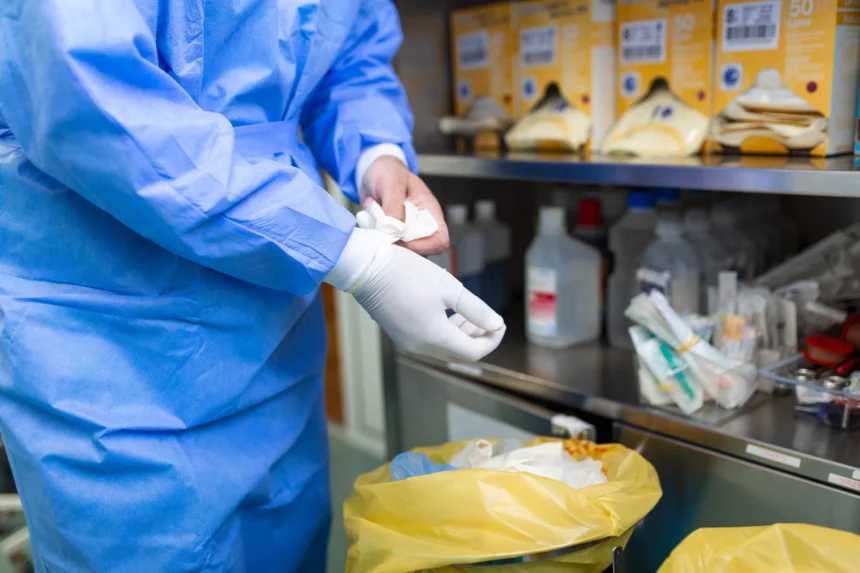Medical waste disposal has always been a critical aspect of healthcare management. It’s not just about removing waste but doing so in a manner that is environmentally responsible, safe, and compliant with stringent regulations. The stakes are high, as improper disposal can lead to contamination, infections, and other public health hazards. But as the world continues to advance, so do the technologies that are transforming the way medical waste is handled.
One such area seeing significant innovation is in the technologies used for medical waste disposal. From smart systems that track waste streams to cutting-edge machines that sterilize and reduce the waste to its minimal form, the possibilities are expanding. If you’re interested in understanding how these innovations work, here’s a breakdown of the top technologies transforming medical waste management today.
The Role of Automation in Waste Disposal
Automation has played a key role in improving the efficiency and safety of waste disposal systems. Today, hospitals and healthcare facilities use automated waste tracking systems that allow for real-time monitoring of waste disposal. This reduces human error, helps with regulatory compliance, and improves the speed at which waste is processed.
For instance, automated sorting systems are now able to categorize medical waste as hazardous or non-hazardous with greater accuracy. By incorporating sensors and artificial intelligence, these systems ensure that potentially dangerous waste like used needles or infectious materials are separated from regular waste. Not only does this make the disposal process safer, but it also improves the overall efficiency of waste management at medical facilities.
Advanced Sterilization Technologies
Sterilization is the cornerstone of safe medical waste disposal. Traditionally, autoclaving was the go-to method for sterilizing medical waste. However, innovations in sterilization technologies have expanded beyond the standard methods.
One such example is the use of microwave-based sterilization systems. These systems use microwave radiation to break down waste, ensuring that all pathogens are destroyed. This method is faster than autoclaving, requires less energy, and leaves behind less residual waste, making it an environmentally friendly alternative.
Another growing technology in sterilization is the use of plasma arc systems. These systems use high-energy electrical fields to break down waste at a molecular level. The process generates high temperatures that completely sterilize and disintegrate medical waste, turning it into non-toxic materials. It’s an efficient and eco-friendly way to handle the often hazardous waste generated by medical procedures.
Waste-to-Energy Technologies
As concerns over landfills and waste incineration continue to rise, waste-to-energy (WTE) technologies are becoming a key player in medical waste disposal. These systems convert medical waste into usable energy, providing a sustainable solution for waste management.
Incinerators that are designed specifically for medical waste can now operate at higher temperatures, ensuring that the harmful elements in the waste are fully destroyed. Moreover, some of these advanced incineration systems are equipped with air filtration systems to capture harmful gases and reduce emissions. This helps meet stringent environmental regulations while producing energy that can be used to power medical facilities or local grids.
Smart Waste Monitoring and Data Management
The future of medical waste disposal lies in the data. With the rise of the Internet of Things (IoT) and cloud-based technologies, waste management systems are becoming smarter and more connected. These systems track waste at every stage of disposal, providing data on the volume, type, and processing time for each item.
Real-time monitoring ensures that no waste is left unattended or disposed of improperly. This technology also allows for predictive analytics, helping hospitals and clinics to optimize their waste disposal operations. By understanding patterns and trends in waste generation, facilities can predict when certain types of waste are likely to be produced and prepare accordingly.
This data is invaluable in ensuring compliance with healthcare regulations and can even contribute to sustainability goals by identifying areas where waste can be reduced or reused.
Chemical Waste Neutralization
One of the biggest challenges in medical waste disposal is the handling of chemical waste, which can be toxic and hazardous. Technologies have emerged that can neutralize chemical waste without causing harm to the environment or public health.
Chemical waste neutralization systems use specially designed compounds to break down dangerous chemicals into safer, less harmful substances. These systems can be integrated into existing waste treatment processes, ensuring that any hazardous chemical materials are safely handled and disposed of without harm to workers or the environment.
Reducing the Carbon Footprint: Eco-Friendly Technologies
Healthcare organizations are under increasing pressure to reduce their environmental impact, and medical waste disposal is no exception. Several innovative solutions are now being used to reduce the carbon footprint of waste management systems.
For example, composting technologies are being adapted for medical waste, particularly organic waste from healthcare facilities. These systems break down biodegradable medical materials into compost, which can be used as a soil amendment. This reduces the need for landfill space and helps minimize methane emissions.
Additionally, the development of biodegradable packaging materials in the medical field is also helping to reduce the environmental burden. By replacing plastic packaging with biodegradable alternatives, medical waste disposal becomes less damaging to the environment from the very start of the waste cycle.
Sustainable Medical Waste Disposal Strategies
As technology advances, medical facilities are beginning to adopt more sustainable and circular models of waste disposal. Instead of treating medical waste as a byproduct to be discarded, some hospitals and clinics are finding ways to repurpose or recycle certain materials.
For example, medical plastic waste can be recycled into new products, such as furniture or even new medical equipment. Hospitals are now partnering with specialized recycling companies to ensure that non-contaminated materials like plastics and metals are diverted from landfills and turned into usable products.
Such innovations not only help reduce waste but also promote a circular economy where resources are reused, making the entire process more sustainable.
Challenges and the Future of Medical Waste Disposal
While these technologies are promising, the future of medical waste disposal faces several challenges. The costs of implementing these systems can be high, especially for smaller healthcare providers. Additionally, there is the challenge of educating healthcare workers about the proper use of new technologies.
As we move forward, it’s likely that more advanced technologies will continue to emerge, making waste disposal even more efficient, eco-friendly, and safer. The shift towards automation, sterilization, and energy recovery will redefine the medical waste disposal industry, ensuring that healthcare facilities can continue to manage waste responsibly while minimizing their environmental impact.
Embracing a Cleaner, Greener Future
The medical waste disposal sector is experiencing a technological revolution. With innovations that prioritize sustainability, efficiency, and safety, the industry is paving the way for a cleaner, greener future. As these technologies evolve, we can expect even more effective solutions to help healthcare providers manage waste in ways that protect both public health and the environment.










 /home/u448362301/domains/theexpotab.com/public_html/wp-content/themes/foxiz/templates/popup.php on line 167
/home/u448362301/domains/theexpotab.com/public_html/wp-content/themes/foxiz/templates/popup.php on line 167